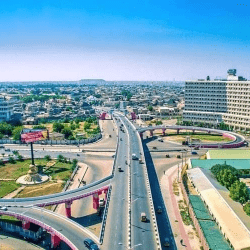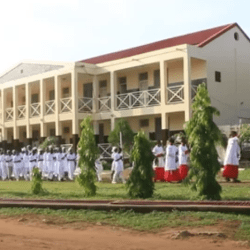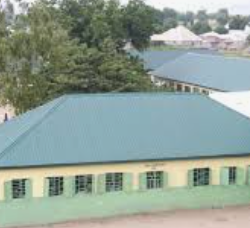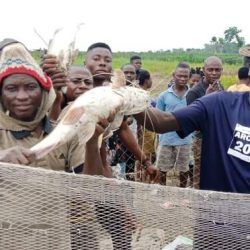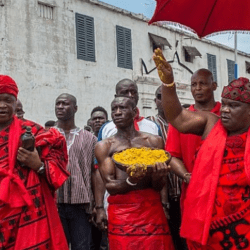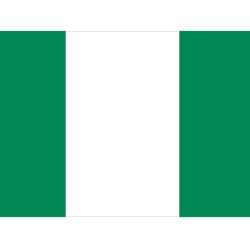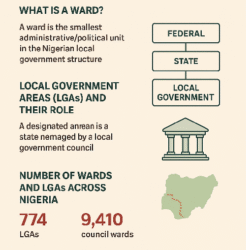Kano has many places of interest, such as Kurmi market established in the 15th century is in the heart of Kano City, the centuries-old city wall with some of its gates still standing.
The Gidan Rumfa (Emir’s Palace) is the oldest and largest traditional palace in Nigeria. It was established by Sarkin Kano Muhammadu Rumfa (1463 – 1499) and its has been in continuous use since that time. Although the Sarki’s authority has been transformed to community leadership, his influence is still profound and everyday common people seek solace in his leadership for his intervention in some of their predicaments.
Other places of interest for relaxation and picnicking abound in the state. They include the Rock Castle, strategically located, over looking the famous Tiga Dam, Rurum Tourist Lodge, Kano Zoological Garden, Gidan Makama Museum, etc. Tourists to Kano should not miss witnessing the Durbar, unique in the world because it is the largest procession of colorful horses and also portrays the Emir’s Regalia which is one of the most impressive dating back to Emir of Kano Muhammadu Rumfa. This Durbar is held during both the Eid-el-fitr at the end of the holy month of Ramadan and Eid-el-Kabir which is an event marking the 10th day of Dhul Hajj (the 12th month of the Islamic Calendar).
The Kano State Tourist Camp, located just near the Central Hotel is an important transit point for European trams-Saharan visitors, a central venue for students and cultural groups. It offers excellent and affordable accommodation for tourists who prefer not to lodge in the many luxurious hotels in the city.
The marketing and promotion department of the Tourism Board situated at the Tourist Camp provides visitors with both written and oral information on Kano City and it’s surroundings, as well as all information on tourism in the state.
Package tours can also be arranged by the Tourism Board, ranging from 3-hour city tour to an all-inclusive tour to places of interest within the state such as Rurum, Tiga and Falgore Reserve, as well as outside the state to places such as Yankari Game Reserve the largest in West Africa. The Kano State Tourism Board has an advantage because of its experience in handling international travelers.
Durbar Festival
Kano State Durbar or Hawan Sallah as it’s locally called is a royal parade of thousands of men on horses adorned with garments and regalia. It is a colourful display of culture full of pomp and pageantry. A spectacular traditional concert of and bazaar of African music.
Kofar Matar Dyeing Pits
The Kano indigo-vegetable dyeing pits ae one of the most fascinating aspects of the old city. Various designs are folded into the material before dyeing and the fabric is often beaten to achieve the shiny, indescent appearance. The techniques employed to obtain this look are unmatched around the world. And, although the methods they use are ancient, these lush works of art on fabric always remain extremely popular and continue to be in great demand.
Kano State History Museum
This history museum at Gidan Dan Hausa house has a collection of artefacts from stone age to present day within the colonial house of the governor from the 1900′s. A friendly tour guide will explain all objects to tourists.
Kano City Gates & Walls
During the reign of Sarkin Kano Usman Giji Masu Dan Wasiri, the grandson of Bagauda, the third King in the Habe dynasty he decided to build and surround the ancient city with a wall as protection against external invaders. This was the year 1112 AD!
Emir of Kano’s Palace, Kano
Also known as “a settlement within a settlement”, the palace was created by Abudullahi Bayero, the father of present Alhaji Ado Bayero (Emir of Kano). This present day Emir of Kano’s palace provides an insight into the typical Hausa architectural design that has been existence for well over five hundred years.
Gidan Dan Hausa, Kano
This is an excellent example of Hausa traditional mud-walled architecture which was built in 1905 as the former and restored home of Hans Vischer, a Swiss – born teacher who contributed much to Nigeria’s education system during colonial times. He was appointed Director of Education for Northern Nigeria by the colonial authorities and by 1914 had established over 1,000 primary schools in the north including one in the grounds of the house. He was known as “Dan Hausa” “son of Hausa” because he spoke the language so well. Today the house is an interesting museum with rooms dedicated to arts and crafts, Durbar costumes and gowns previously worn by Emirs.
Falgore Game Reserve
The 1000sqkm game reserve was established as Kogin Kano Forest reserve in 1949 located in southwestern part of Kano along Kano-Jos road, about an hour and a half journey from Kano city. It is a big forest reserve that is evergreen all the season and has various species of wildlife animals such as jackal, leopard, serval, hartebeest, bush baby, spotted hyena, buffalo, warthog, oribi, red fronted gazelle, red flanked duiker, bushbuck, patas monkey, green monkey etc.
Buturiya Wetland Game Reserve
Buturiya is a game sanctuary located 40km from Hadejia. It is an important wintering-ground for migrant birds from the Pale arctic regions of Europe, north-western coast of Africa and Asia. Buturiya wetland is very rich and a sanctuary for the pelican, knob-billed goose, yellow- billed stork, grey hornbill and white- faced duck etc.
Minjibir Weaving Centre
This is an area where the ancient weaving industry still thrives. Walking through this typical African Village, you can watch local weavers at their daily work.
Dala & Goron Dustse Hills
The two hills are undulating landscape around Kano, both within the circumference of the walled city. The two hills provide full view of the horizon around the state capital from their tops. Hence, visitors often climb the hills for what may be described as the aerial view of Kano city and the expansive land beyond.
Mallam Kato Square, Kano
This square in Kano metropolis is a recreation centre erected on a piece of land initially settled by a Quranic mallam who, when displaced by the British colonial powers, prophesized that no Hausa would b erected there.
Dawakin Tofa Pottery
In Dawakin Tofa you can see pottery making at its best. Almost every citizen at Dawakin knows this art and it is still practiced in most homes.
Other Places of Interest
- Audu Bako Zoological Garden
- Bagauda Lake Hotel & Resort
- Tiga Dam
- Kusalla Dam & Fishing Center
- Dala Hill
- Hills & Valley
Kano
Kano is a city in northern Nigeria and the capital of Kano State.
It is the second largest city in Nigeria after Lagos, with over four million citizens living within 449 km2 (173 sq mi).


The major inhabitants of the city are the Hausa people.
Centuries ago, Kano was largely cosmopolitan with settled populations of Arab, Berber, Tuareg, Kanuri and Fula and remains so with the Hausa language spoken by many residents.
It is the traditional state of the Dabo dynasty who have ruled as emirs over the city-state since the 19th century.
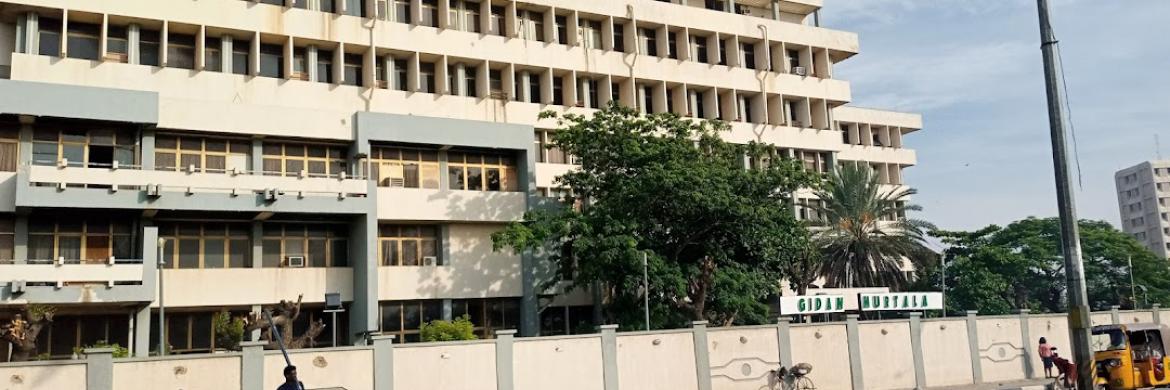
The city is one of the seven medieval Hausa kingdoms.
Located in the Savanna, south of the Sahel, Kano is a major route of the trans-Saharan trade, having been a trade and human settlement for many years.
Prior to the creation of Kano State in 1967, it was the largest Hausa Kingdom in Africa that is currently 1000 years old, based on an ancient settlement around Dala Hill.


According to the Kano Chronicle, Bagauda, a grandson of the mythical hero Bayajidda. became the first king of Kano in 999AD, reigning until 1063AD.
Muhammad Rumfa ascended to the throne in 1463 and reigned until 1499.
During his reign he reformed the city, expanded the Sahelian Gidan Rumfa (Emir’s Palace), and played a role in the further Islamization of the city as he urged prominent residents to convert.
The Hausa state remained independent until the Fulani conquest of 1805.


At the beginning of the 19th century, Fulani Islamic leader Usman dan Fodio led a jihad affecting much of northern Nigeria, leading to the emergence of the Sokoto Caliphate.
Kano became the largest and most prosperous province of the empire.
In March, 1903 after a scanty resistance, the Fort of Kano was captured by the British, It quickly replaced Lokoja as the administrative centre of Northern Nigeria.
It was replaced as the centre of government by Zungeru and later Kaduna and only regained administrative significance with the creation of Kano State following Nigerian independence in 1960.
After independence, Kano state was created in 1967 from the then Northern Nigeria by the Federal military government.
The first military police commissioner, Audu Bako, is credited with building a solid foundation for the progress of a modern society. Most of the social amenities in the state are credited to him.




